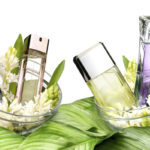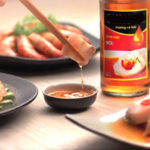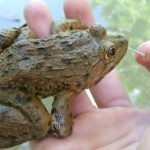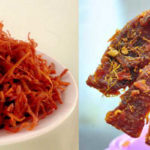Bird’s nest (swiftlet nest) is an extremely nutritious food with many health benefits and high price. Therefore, there are many counterfeit and fake products on the market, which are very cleverly made. Those who are not careful and knowledgeable are easily deceived and end up losing money.
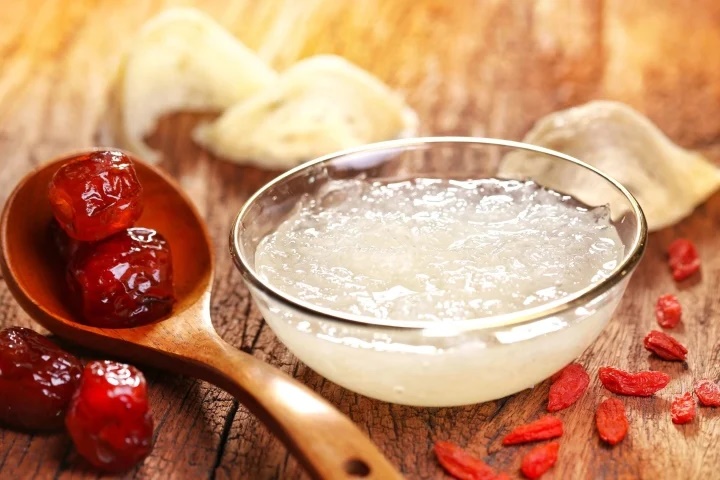 You need to know the following methods to distinguish between real and fake bird’s nests in order to avoid being deceived and to prevent unscrupulous businesses from prospering.
You need to know the following methods to distinguish between real and fake bird’s nests in order to avoid being deceived and to prevent unscrupulous businesses from prospering.
Methods to distinguish between real and fake bird’s nests
You can identify real or fake bird’s nests through the following factors.
External appearance of bird’s nests
Real bird’s nests have a tangled and overlapping shape, like a twisted pumpkin vine, forming a curved shape. They look dry and fibrous. Real bird’s nests feel firm when held, with a thin nest edge but a thick body to firmly adhere to the rock wall.
Real bird’s nests have uneven sizes and varying thicknesses due to their natural formation. When examined under sunlight, we can see light passing through them, giving them a milky white color.
On the other hand, fake bird’s nests are usually in a solid block shape, with a relatively even surface. The nest fibers are neatly arranged and meticulously crafted. When held in hand, fake bird’s nests are very light and look rough compared to real nests.
The fibers of fake bird’s nests look softer and, when examined under sunlight, they appear transparent due to being made from starch, egg whites…
Color of bird’s nests
Real white bird’s nests have a milky white color, sometimes with a yellowish tint, and have a slightly musky taste of swiftlet saliva. Fake white bird’s nests: have a strong smell of bleach, have a bright white color, and look transparent.
Real blood bird’s nests have a bright red or orange color, with a distinctive aroma. Fake blood bird’s nests have a strong fishy smell and tend to be dark red.
Scent
Smell is also a way to distinguish between real and fake bird’s nests. Real bird’s nests usually have a musky smell, a characteristic musty odor that does not change even when stored for a long time. The musty smell of real nests is not a sign of low quality, but a distinctive smell caused by the nests being formed in nature. Especially after being cooked, the characteristic musky smell of the nests remains unchanged.
Fake bird’s nests have a fishy smell when dry, like squid or fish; when cooked, they no longer have the characteristic smell and may even have a dark smell of bleach.
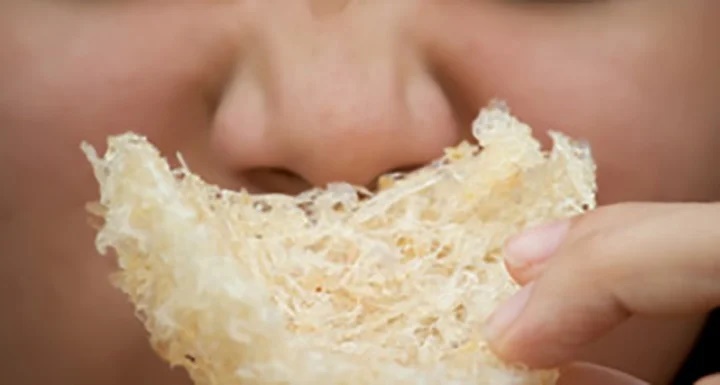
Smell is also a way to distinguish between real and fake bird’s nests. (Photo: Zii Yến)
Elasticity
You can feel the elasticity of bird’s nests by gently squeezing them with your hand. Real bird’s nests are brittle, easy to break into small pieces; on the other hand, fake bird’s nests have a certain degree of elasticity and will break into blocks.
Expanding of the nests
Another way to distinguish real and fake bird’s nests: check the expansion of the nests. Real bird’s nests, when boiled, will have a distinctive musky smell, and the fibers will expand intact. Even when used to cook soup and boiled for a long time, the nests still do not dissolve or become soft.
On the other hand, fake bird’s nests, when boiled, will have a dark smell of chemicals. The fibers expand less, and they may even disintegrate and become soft quickly due to being made from starch. No matter how well fake bird’s nests are made, when boiled for about five minutes, they will dissolve.
Soaking bird’s nests in water
When soaked in water, real bird’s nests will double in size, and when stirred with your hand, you will see bubbles on the water surface.
Fake bird’s nests, because they have been processed, will not expand much when soaked, and when stirred, the water will become cloudy due to being made from starch and additives.
Source: VTC.vn
Recognizing Chemically Dyed Dried Beef: A Guide
Consumers should be aware of the potential dangers of consuming certain types of dried beef, such as those dyed with artificial coloring and treated with chemicals, as it has been associated with numerous cases of food poisoning. Knowing how to differentiate between genuine and fake dried beef can help to avoid such risks.

























